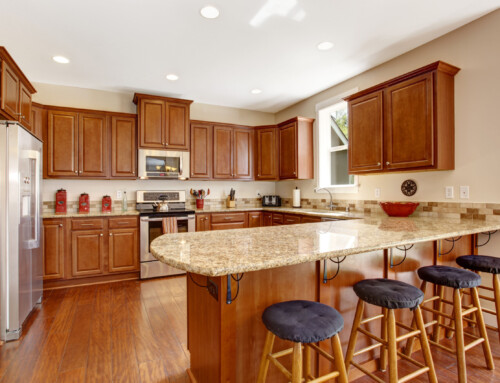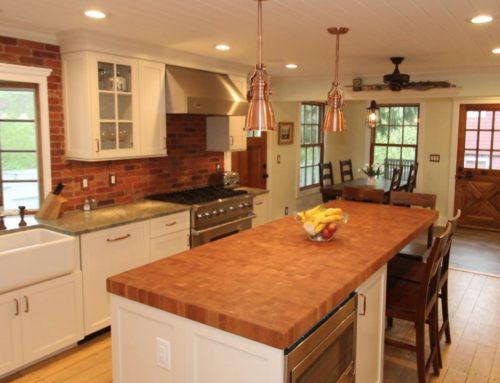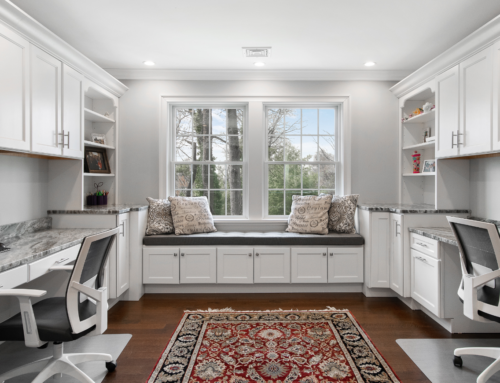Sometimes homeowners don’t want to have rules when designing their kitchens. The good news is, with transitional kitchen designs, homeowners don’t need to limit themselves. Read on to discover the elements that go into a transitional kitchen space.
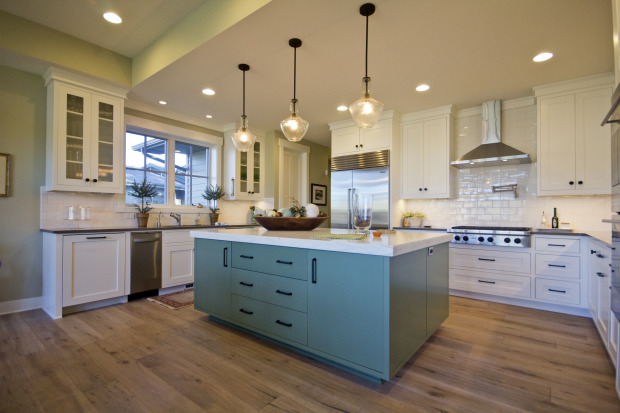
What is a transitional kitchen?
It has often been difficult to define a transitional kitchen. Most easily put, it is a space that smoothly transitions between styles and aesthetics. As HGTV puts it, “People are often reminded of something familiar when they see it (a transitional kitchen), but they can’t quite place it.” It can be mostly modern with some rustic touches, for example, or maybe completely modern with one or two traditional elements. Perhaps the most appropriate definition is that a transitional kitchen is a space that does not stick to one, sole design motif.
Colors
While transitional kitchens differ in aesthetic, they do tend to have color in common. Because they tend to mix styles and designs, keeping color schemes neutral is important. Transitional kitchens are usually white, beige, tan, taupe, brown, grey, charcoal, and other neutral colors. These hues allow for changing your mind since stark colors can easily blend with them.
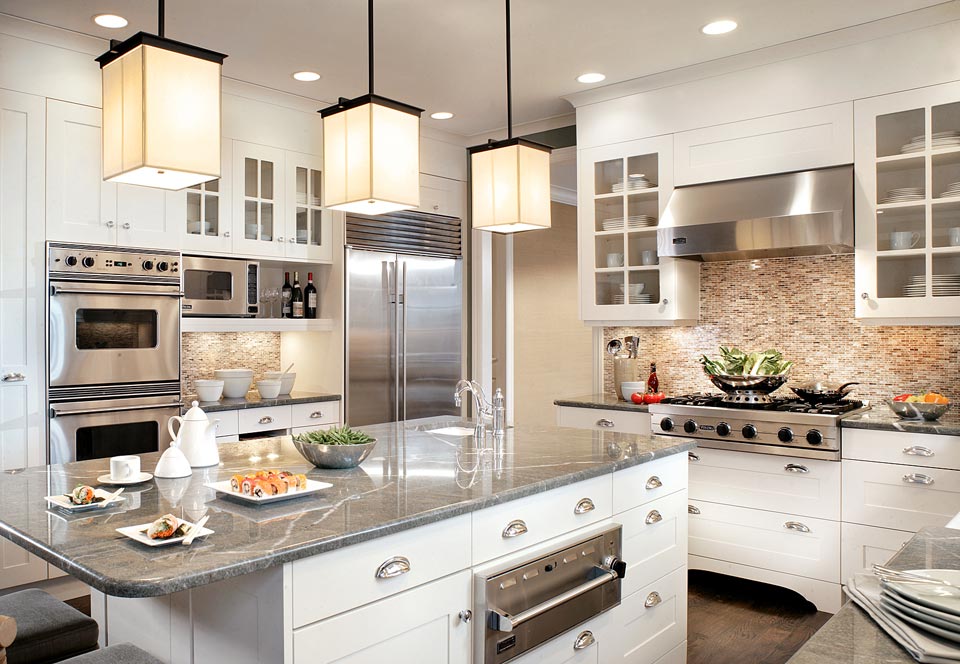
Materials
The idea here is to mix and match, regardless of the ones you choose. For example, using concrete (a modern design material) in traditional designs makes for the perfect transitional design. Mixing components from different eras, such as corbels, brackets, moldings, doors and legs also helps tie in transitional styles. If you’re set on using materials like granite and marble for countertop, opt perhaps for a matte rather than polished finish. For sinks, consider a farmhouse sink that has been redesigned with a contemporary finish, such as stainless steel. Don’t forget to add texture, like with a stone backsplash.
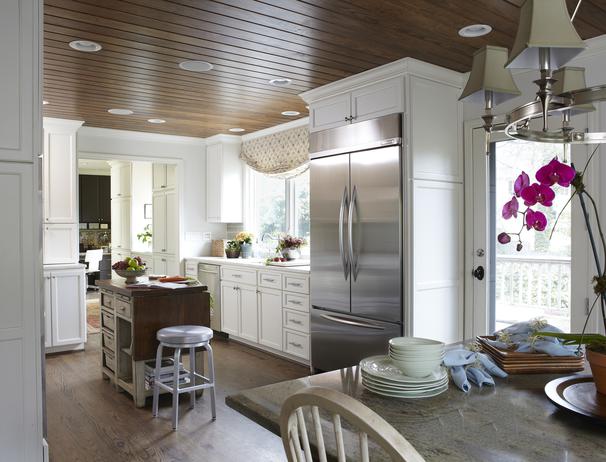
Extras
Every kitchen, not just a transitional one, deserves a bit of a pop. It doesn’t need to be anything dramatic, but just a little touch of something different that adds an element of surprise. Millwork, corbels, windows, furnishings and more bridge the gap between fancy and plain. If you decide to have a single color be your little bit of extra, make sure you use subtle hints of it around the space, like colored jars on your countertops and fruit bowls of the same color on your island or table. A little goes a long way!

